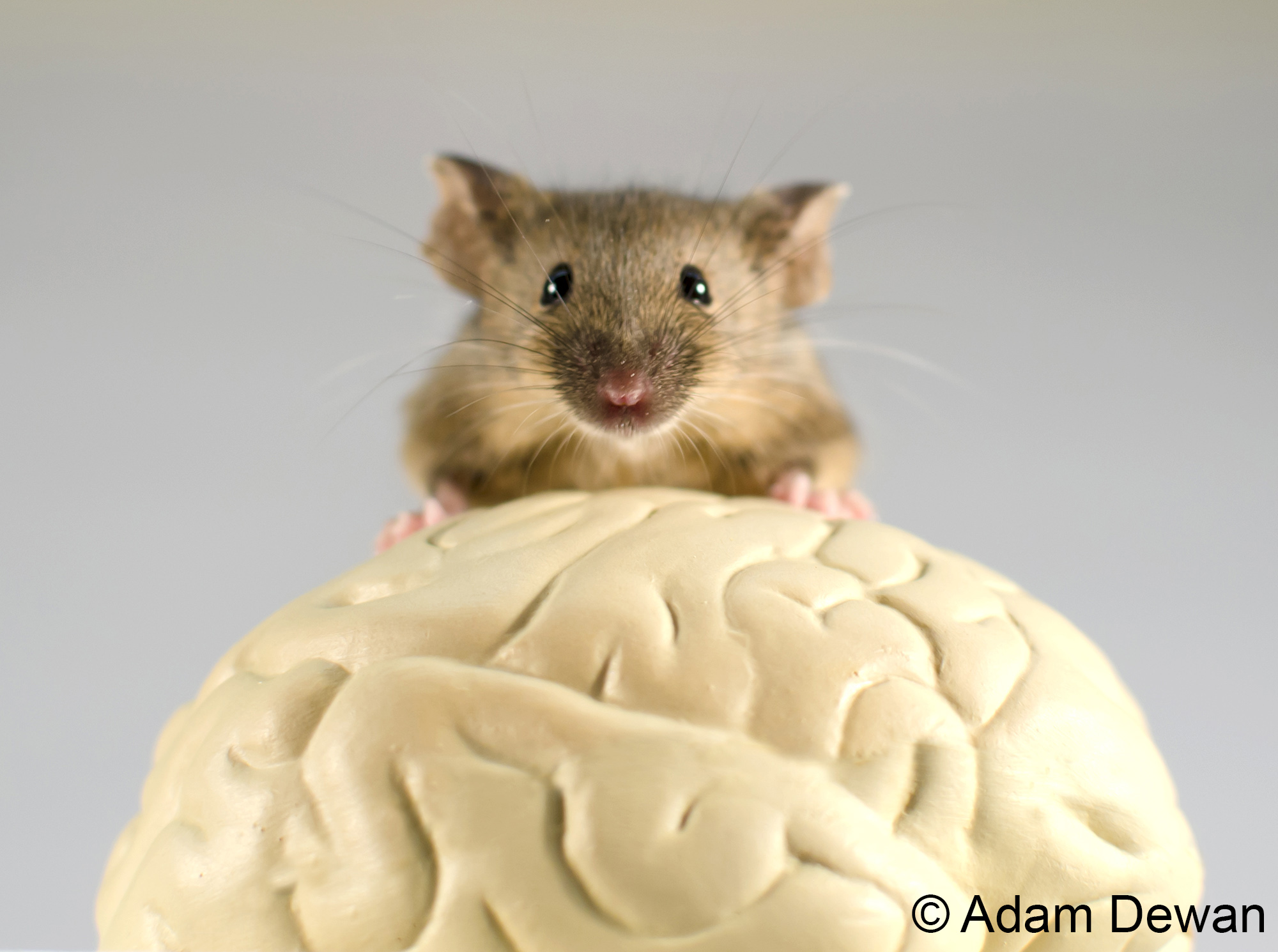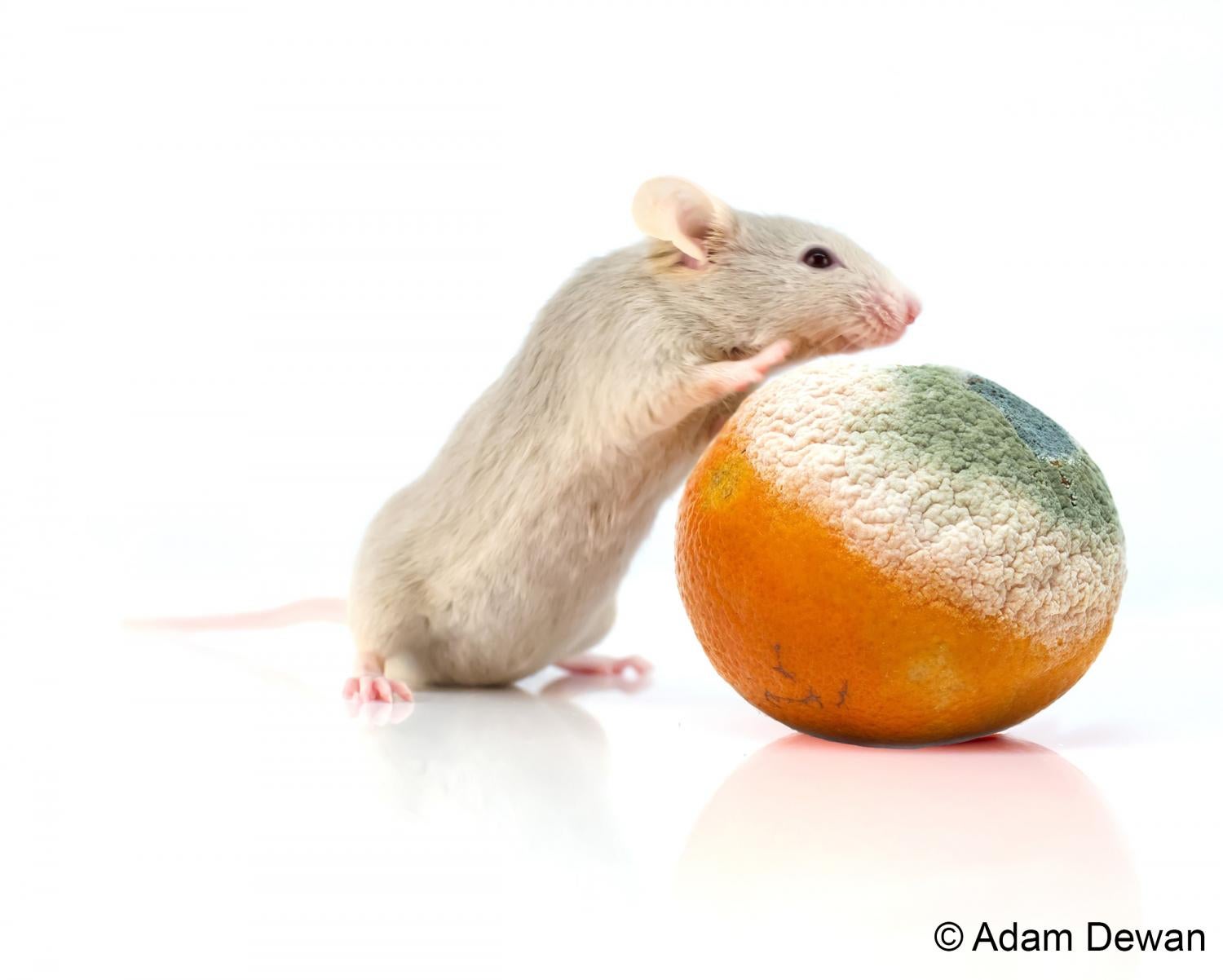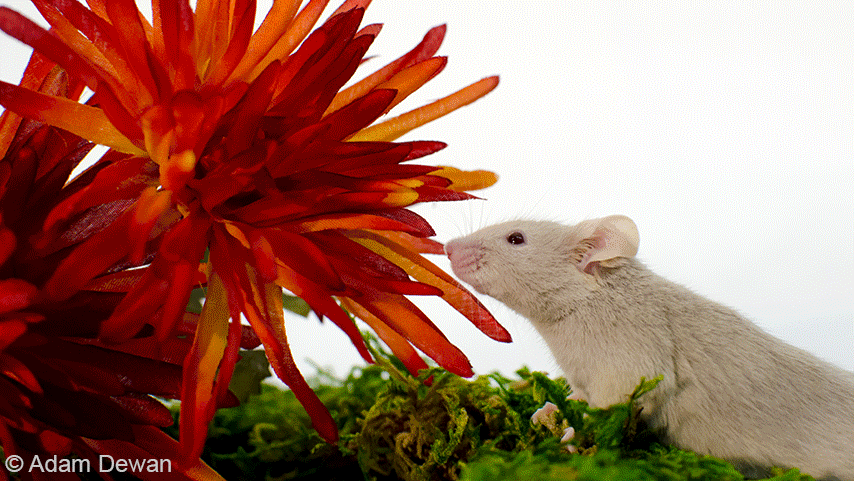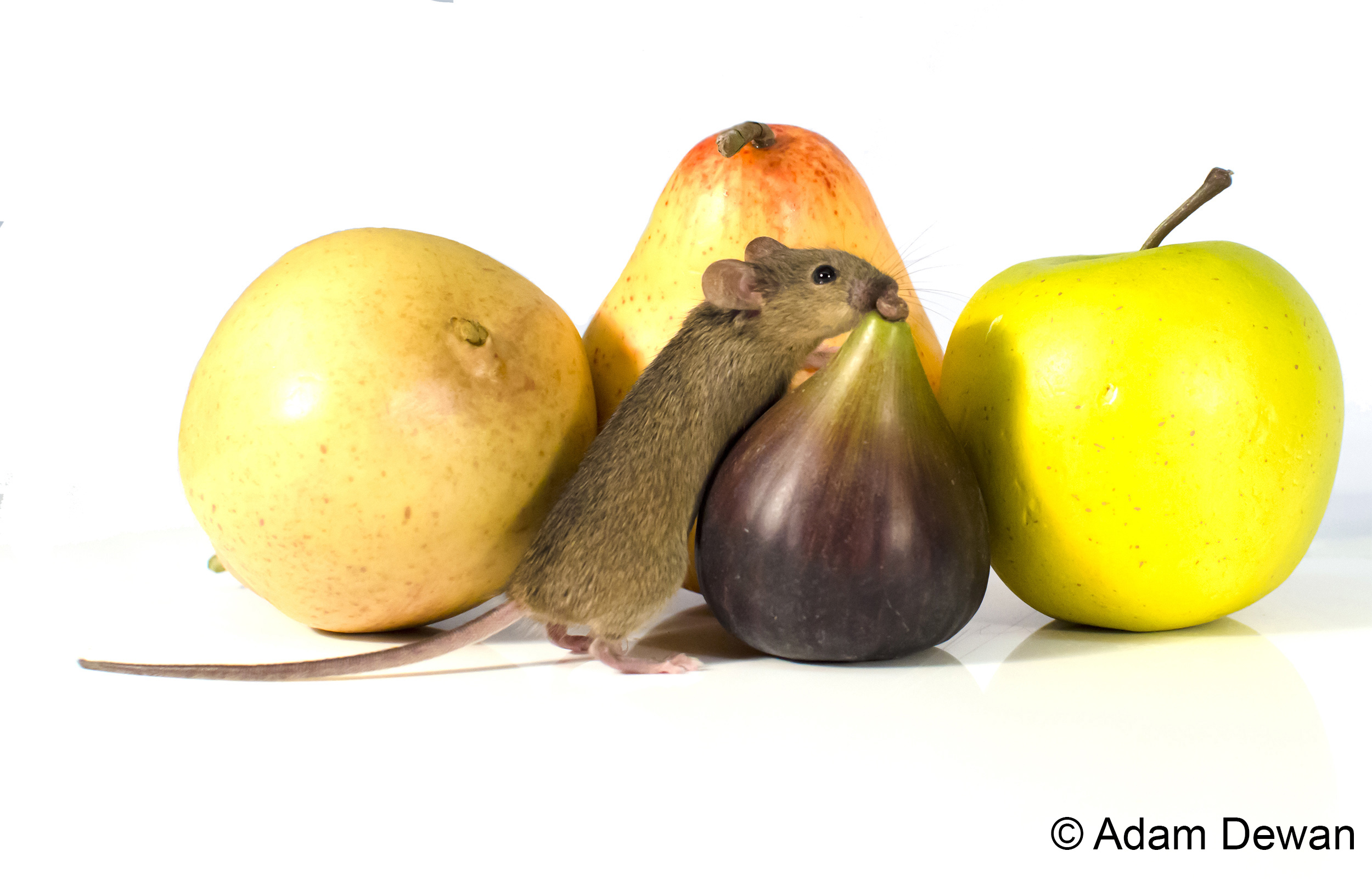THE OLFACTORY SYSTEM
Untapped model for understanding how the brain works
 We manipulate the olfactory receptor repertoire of mice to explore how sensory perception is mapped and encoded within the brain of mammals.
We manipulate the olfactory receptor repertoire of mice to explore how sensory perception is mapped and encoded within the brain of mammals.
The olfactory system is responsible for our sense of smell. From an evolutionary perspective, the olfactory system is considered to be the “oldest” of the sensory modalities but remains one of the least understood. The olfactory system of most vertebrates consists of a main olfactory system and an accessory olfactory system. Our lab is focused on the main olfactory system which is critical in the detection of airborne chemicals. The main olfactory system is unique among the sensory systems in its genetic tractability and the fact that it does not have a thalamic relay en route to the primary cortical region that processes sensory information. These features allow us to dissect the neural mechanisms that underlie sensory perception with genetic specificity.
Importance to human health
The olfactory system contributes significantly to overall health and quality of life by allowing humans to evaluate food sources as well as to avoid harmful chemicals. Unfortunately, olfactory disorders are common and affect 1 out of every 5 people. These disorders cause significant decreases in food enjoyment, elevated stress levels based on the inability to smell gas or smoke, problems with appetite regulation, and impaired social interactions at home or at work (Croy et al.,2014). These decreases in an individual’s quality of life frequently lead to depression. Our lack of knowledge about the olfactory system translates to these patients having little to no help from health care professionals. However, it is our hope that by using a genetically tractable model, such as the mouse, we can further our understanding of the fundamental principles of the mammalian olfactory system
 Evaluating potential food sources is an important function of the olfactory system in all species.
Evaluating potential food sources is an important function of the olfactory system in all species.
Organization of the mouse olfactory system

Airbone chemicals (odorants) enter the nose and interact with millions of olfactory sensory neurons (OSNs) in the olfactory epithelium of the nasal cavity. Stimulus transduction takes place in the cilia that emanate from the dendrites of OSNs. Axons from these neurons project to the olfactory bulb where they synapse with second-order neurons in structures called glomeruli.
To encode the multitude of odors, mice maintain a large repertoire of odorant receptors (>1000). Each OSN is thought to express only a single odorant receptor gene, which solely dictates the odorant responsive profile of the neuron. Axons from OSNs that express the same odorant receptor project to common glomeruli in the olfactory bulb. In this way, each odorant receptor is mapped onto the olfactory bulb. One of the questions, we are interested in is how glomerular organization influences the odor perception. Read more
Significant hurdles in olfactory research
 The olfactory system is tasked with identifying an odor (e.g.a fig) at varying distance, degrees of ripeness, and in the presence of other similar background odors (i.e. other fruits). The olfactory system accomplishes this task without a single dedicated receptor devoted to each odorant.
The olfactory system is tasked with identifying an odor (e.g.a fig) at varying distance, degrees of ripeness, and in the presence of other similar background odors (i.e. other fruits). The olfactory system accomplishes this task without a single dedicated receptor devoted to each odorant.
1. Innumerable and complex stimulus - Odorants are not only temporally and spatially complex but can be mixtures of many different chemicals.
2. The number of receptors - Mice have over 1,000 odorant receptors while humans are thought to have approximately 400 odorant receptors. The sheer number of receptors has clouded the contribution that an individual receptor makes to perception. This is a question we are currently addressing Read more
3. Receptor specificity - Each receptor lacks one-to-one specificity with an odorant. A single receptor can be activated by more than one odorant and a single odorant can activate more than one receptor. This has made the identification of individual receptors that make key contributions to perception hard to identify. One of the questions, we are interested in what is the contribution of single olfactory receptors to odor perception. Read more

